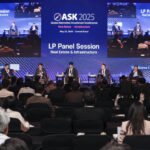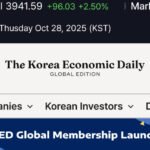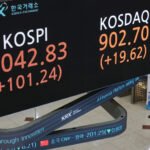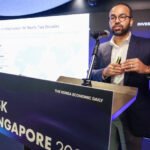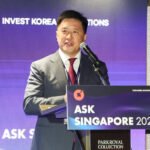
WASHINGTON D.C. — South Korea needs to prepare for its benchmark interest rates to fall to levels so low that the central bank would have limited room to stimulate the economy through interest rate policy alone, Rhee Chang-yong, governor of the Bank of Korea, said on Thursday.
“As a newly advanced economy facing rapid population aging, Korea risks reaching the effective lower bound (ELB) in the distant future,” Rhee said during a speech at the 12th annual Michel Camdessus Central Banking Lecture hosted by the International Monetary Fund (IMF).
An ELB refers to the minimum threshold for nominal interest rates, below which further rate cuts could be detrimental to the economy.
To deal with the ELB, Rhee proposes emerging markets, including South Korea, consider implementing a funding for lending (FFL) scheme as an alternative to conventional monetary policy.
Under the FFL framework, central banks provide low interest funding to private financial institutions, which then channel credit to targeted sectors.

The former director of Asia and Pacific Department at the IMF said that the BOK’s monetary policy decisions in January reflected its use of the FFL facility to complement conventional policy tools.
In January, the BOK left interest rates unchanged at 3.0%, defying market expectations of a cut. It cited political uncertainty in the aftermath of former President Yoon Suk Yeol’s ill-fated martial law decree as a key factor behind the rate decision.
“Rather than immediately cutting rates, we used the lending facility to provide targeted support to the self-employed and SMEs (small and medium-sized enterprises), while waiting for political uncertainty to ease,” he told the conference.
“This illustrated how such targeted measures can address the limitations of interest rate policy as a ‘blunt tool.’”
South Korea’s policy rate has remainedat 2.50% following a quarter-point cut in February and May, respectively.

Rhee cautioned against the adoption of quantitative easing and foreign exchange market intervention in Asia’s No. 4 economy, warning they could cause adverse impacts such as draining high-quality liquid assets from the country.
The governor also calls for structural reforms in South Korea, saying he has expanded the scope of the BOK’s research beyond monetary policy to address structural issues tied to long-term growth, such as labor force participation, immigration and regional development.
“Considering that the ELB risk in Korea is mainly driven by structural factors like population aging and low birth rates, I believe the best policy to counter the ELB is not reactive fiscal or monetary intervention, but proactive prevention through structural reforms,” the governor noted.
By Jin-gyu Kang
joseph@hankyung.com
Yeonhee Kim edited this article.

